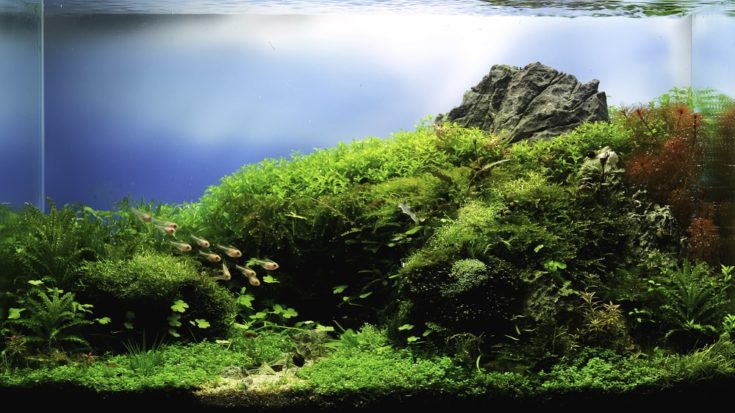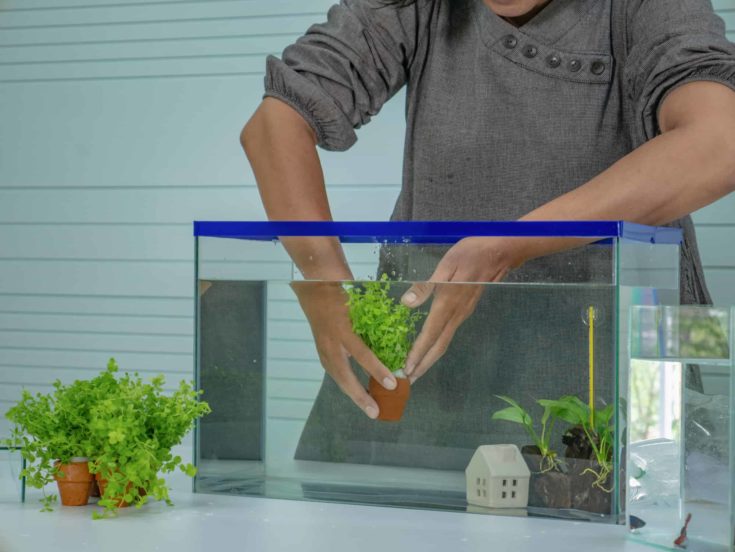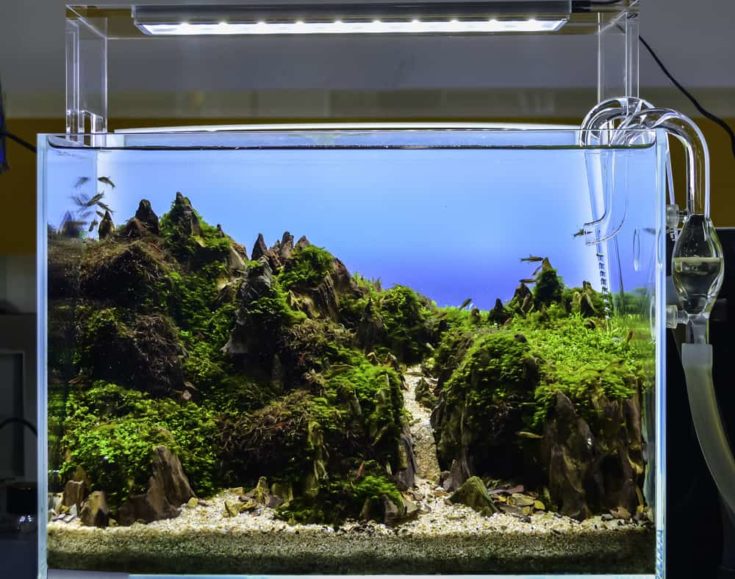Zebra Loach – Overview
Scientific Name
Botia striata
Common Name (species)
Zebra Botia, Thin Line Loach, Candystripe Loach, Striped Loach, Lined Loach, Tiger Loach, Crossbanded Loach
Family
Origin
Comes from Mysore in the Western Ghats mountain range in southern India and is also found in parts of Bangladesh.
Diet
Omnivore
Care Level
Intermediate
Activity
Lively, active
Lifespan
8 to 15 years
Temperament
Peaceful
Tank Level
Primarily bottom-dweller
Minimum Tank Size
30 gallons
Temperature Range
Tropical 73° to 79° Fahrenheit
Water Hardness
5 – 12 dGH
pH Range
6.5 to 7.5
Filtration/Flow Rate
Prefers a slow flow and needs excellent filtration.
Water type
Freshwater
Breeding
Egg layer but not bred commercially.
Compatibility
Peaceful but will eat snails, shrimp, and very small fish. Can be territorial if overcrowded.
OK, for Planted Tanks?
Safe with plants
Origins

The Zebra loach was first described in 1920 by Narayan Rao.
The fish live in the southern Indian Western Ghats mountain range, specifically in Mysore. There’s also a small population of Botia striata in Bangladesh, northern India.
Unfortunately, the Zebra loach’s range is very limited, largely due to deforestation and pollution, and the fish are currently found in just four locations. For that reason, the Zebra loach is listed as endangered on the IUCN red list.
Natural Habitat
Zebra loaches inhabit slow-moving streams and rivers. The substrate here consists of sand, fine gravel, and leaf litter with exposed areas of bedrock, scattered rocks, and boulders.
These fish are quite shy, preferring to hang out in shaded, dimly lit areas under the overhanging forest canopy.
Appearance

Botia striata have a yellow-green body with around nine wide vertical dark blue-green bands. The inside of each band is bordered with a straight or branched white line.
The fins and tail are translucent, and the tail has bands of pale brown spots running along it. The loach’s mouth has four sets of sensitive barbels that the fish uses for detecting scraps of food on, and buried in, the substrate.
It’s extremely difficult to tell the different sexes apart. However, female Zebra loaches are generally fatter than males when in breeding condition. Immature fish often have a red nose, but that gradually fades into adulthood.
You may see Golden Zebra loaches (Botia almorhae) advertised for sale in your local fish store, but that is a completely different, unrelated species.
Size
Zebra loaches reach a size of around 4 inches when fully grown.
Life Expectancy
Tank-kept Zebra loaches live for 8 to 15 years.
Activity Level/Temperament
Zebra loaches are peaceful, active fishes that spend much of their time foraging for food in and on the substrate.
That said, these fish can be quite shy and can hide if alarmed by something outside the tank. Also, Zebras are mostly nocturnal, so you’ll see more of them if you have LED moonlighting in your tank.
Compatibility And Tankmates
Botia striata are peaceable, friendly fishes that can do well in a community of non-aggressive tank mates.
Tank Mates

Although they’re not strictly a shoaling species, Zebra loaches do tend to be more confident and happier when kept in a group of five or six individuals.
However, shrimp, snails, and small fishes may be viewed as a food source by the loaches. Also, if the tank is too small and the bottom region becomes overcrowded, the Zebra loach can become aggressive.
Feeding
Always choose high-quality fish food for your loaches. Avoid cheap brands that contain too much padding, which contains little nutritional value and is actually harmful to your fish.
What To Feed Your Zebra loaches
The Zebra loach is an omnivore and will eat pretty much anything you offer, including tropical flakes, frozen and live meaty foods, tablets, and sinking pellets. Like other species of loaches, Botia striata will graze on algae that it finds growing on surfaces within the aquarium.
How Much And How Often to Feed

I recommend that you feed your loaches just before or immediately after lights-out, ensuring that enough food drifts down to the bottom of the tank so that the Zebras don’t go hungry.
Tank Requirements
Tank Size
Zebra loaches should ideally be kept in small groups of up to five fish. So, you need at least a 30-gallon tank to comfortably accommodate them. Remember that you need to allow a minimum of one gallon of water per inch of fish if you decide to add more specimens to your collection.
These fish do jump, so always choose an aquarium with a tightly fitting lid or cover slide.
Tank Setup
Substrate
The substrate should be sand or smooth, fine-gauge gravel that doesn’t contain sharp fragments that could injure the fish’s sensitive underbelly.
Decoration
Your tank should include lots of lush plants, but it’s best to avoid carpet species that would prevent the loaches from swimming around the tank bottom and foraging in the substrate.

These fish can be shy, so make sure that you include plenty of hiding places, such as roots, rocks, and caves.
Habitat Requirements
Zebra loaches are highly sensitive to water conditions and are, therefore, best introduced to a mature tank rather than a brand-new setup.
Filtration
Zebra loaches need pristine, well-oxygenated water. So, you’ll need a powerful filtration system that turns the water over at least ten to 15 times per hour. You can achieve that by using an undergravel filter combined with a powerful pump, which produces high oxygen levels and keeps the water super-clean. These fish don’t appreciate a strong flow, so an undergravel setup is ideal.
For extra power, you might want to consider adding an external canister filter system or powerheads.
Water Parameters
The water in the loaches’ tank should be slightly acidic, soft freshwater. These fish can’t live in brackish or saltwater.

The pH level should be in the range of 6.5 to 7.5, with a water hardness between 5 to 12 dGH.
Water Temperature
Zebra loaches are tropical fish, needing warm water of 730 to 790 Fahrenheit.
Lighting
Botia striata need dim lighting that mimics the fish’s natural environment.
Tank Maintenance
These bottom-dwellers need well-oxygenated, clean water to be happy and thrive. In addition to a very efficient filter unit, you must perform partial water changes each week of around 30%.

Use an aquarium vacuum to remove fish waste, decomposing plant matter, and general detritus from around plants, in the tank corners, underneath decorations, and from the substrate. Keep the glass viewing panes clear but take care that you don’t remove the biofilm and bacteria that lives there, as that forms an important part of your biological filter.
Keep the filter media clean and working efficiently by rinsing it once a month or so, and replace the media periodically, according to the manufacturer’s instructions.
Setting Up The Aquarium
Assemble everything you need to set up the aquarium, including:
- Aquarium thermometer
- Canister filtration system or powerhead
- Heater
- LED lighting unit
- Plants
- Sand or fine gravel substrate
- Smooth rocks, driftwood, caves, etc
- Undergravel filter
- Water conditioner
How to Set up the Tank
- Start by washing the substrate under running water to get rid of dust.
- Place a couple of inches of gravel or sand into the tank. Set an upside-down bowl on top of the substrate.
- Install the filter and heater, but don’t switch them on.
- Add dechlorinated tap water to the tank to an inch or so below the fill, slowly trickling the water over the bowl to avoid displacing the gravel or sand.
- The water needs to contain a small amount of ammonia to kick off the nitrogen cycle in your filter’s biological media. So, you’ll need to add a handful of unwashed gravel from an existing tank, a few pinches of fish food, or a few drops of pure ammonia to the water.
- Wash your chosen tank décor to remove dust, and arrange it in the tank.
- If you’re using live plants, snip off dead or damaged leaves or stems, and plant the stems a few inches apart so that they have enough space to grow.
- Switch on your heater and filter and allow them to run 24/7. Living plants need between eight and ten hours of light for photosynthesis, so switch on your lighting unit if appropriate.
Tank Cycling
You need to wait at least ten days for the tank to fully cycle fully before you add any fish. The levels of ammonia and nitrites in the water must be at zero, and nitrates should ideally be below 20ppm for the environment to be safe for fish.
Test the water every day, and if the levels are too high, simply wait a little longer and keep testing the water.
Health And Disease
Although Zebra loaches are reasonably hardy fishes, they can be affected by common fish diseases, especially if the water quality in the tank is poor.
Also, all loaches are highly sensitive to certain commonly-used medications, so always check the contraindications on the product labeling before use.
Signs Of Good Health
Zebra loaches are busy, active fish that are always foraging for food or socializing with other loaches around the bottom of the tank.
These fish are most active at night, and they sometimes like to hide in caves or among the base of plants.
Red Flags
Red flags that could indicate potential health problems for your Zebras include:
- Loss of appetite
- Inactivity
- Hanging at the water surface
- Skin damage, such as sore, ulcers, or red patches
- Flicking against the gravel or objects in the tank
Common Health Issues And Treatment
Health Issue
Ich (White Spot Disease)
Symptoms or Causes
Ich is caused by the aquatic protozoan parasite, Ichthyophthirius multifiliis.
Fish with White Spot flick or rub against things in the aquarium. A scattering of tiny white dots appears all over the fish, including its fins, gill, and body.
Suggested Action
Elevate the tank temperature to 82o F for three days, and use White Spot medication to treat the water.
Health Issue
Flukes
Symptoms or Causes
Flukes are aquatic parasites that fix themselves to the fish’s body or gills. Fish with flukes secrete excessive mucus and rub against things in the tank.
Suggested Action
Treat the water with an antiparasitic medication.
Health Issue
Fungal infections
Symptoms or Causes
White, fluffy growths on the body, gills, and head.
Suggested Action
Quarantine infected fish, and treat the tank with antifungal treatment.
Health Issue
Bacterial infections
Symptoms or Causes
Sores, ulcers, and red patches on the body.
Suggested Action
Treat the water with antibacterial medication.
Health Issue
Skinny disease
Symptoms or Causes
Fish lose weight rapidly. Caused by internal parasite
Suggested Action
Treat water with antiparasitic medication.
Breeding
Zebra loaches are egg-layers. However, it’s very rare that these fish are homebred, and most specimens that you see for sale are farm-raised commercially or taken from the wild.
Availability
You can obtain Zebra loaches from most fish stores or buy them online, with prices beginning at around $6 or $7 each.
Product Recommendations
- Algae magnet
- Aquarium (minimum size 30 gallons)
- Aquarium thermometer
- Aquarium vacuum
- Books on keeping tropical fish
- Filtration system
- Fine-gauge gravel or sandy substrate
- Heater
- High-quality algae wafers, tropical fish flakes, frozen foods, pellets
- LED lighting unit
- Living plants
- Smooth rocks, resin caves, driftwood, twisted roots
- Water conditioner/dechlorinator
In Conclusion
I hope you enjoyed our guide to caring for the Zebra loach.
If you’re new to the hobby and you successfully keep these beautiful, endangered fish in your aquarium, we’d love to know!
Tell us about your Zebra loaches in the comments box below!
And please remember to share our guide if you enjoyed it!The Zebra loach (Botia striata) is a species of small freshwater loach that originates from India. The species’ numbers are declining in their wild habitat, so much so that these loaches are classed as endangered on the IUCN Red List.
Zebra loaches are easy to care for, attractive fish that make a great choice for a beginner’s community tank. That said, these lively fish are intolerant of fluctuations in water conditions, so they need to be introduced to an established, well-maintained aquarium if they are to reach their long lifespan.
Read this guide to learn how to care for the rare and beautiful Zebra loach.
